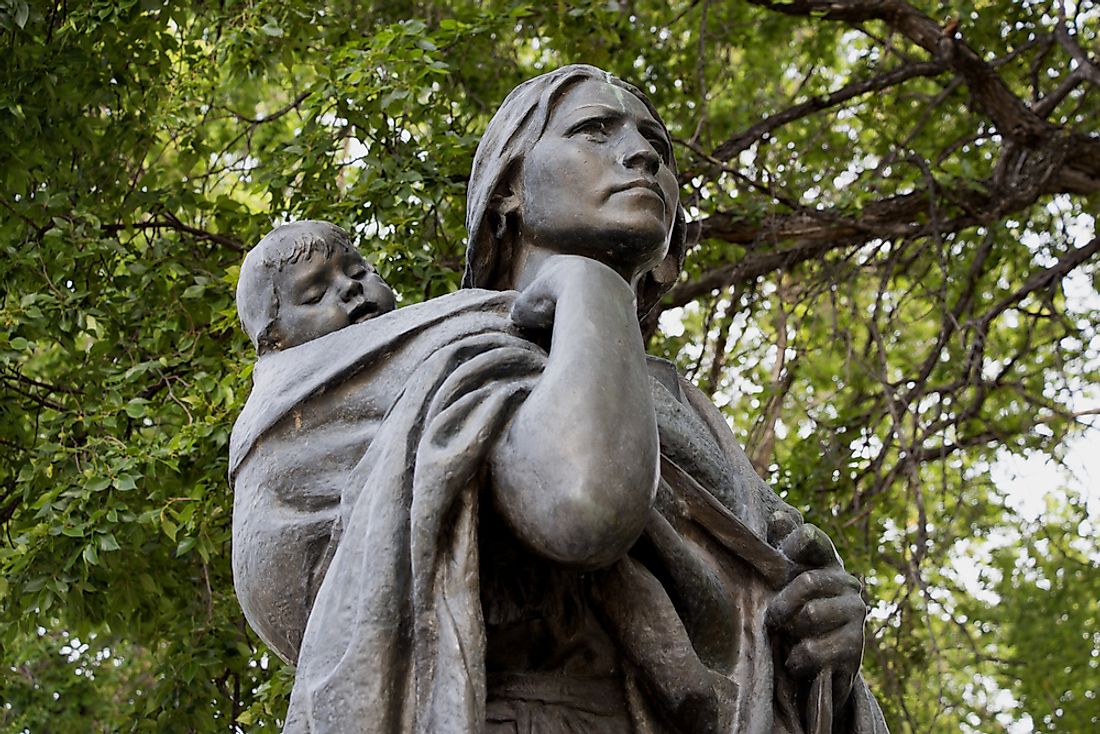Sacagawea – Important Figures in American History

Sacagawea was thought to be born in May of 1788, in the Lemhi River Valley, which is near the present day area of Salmon, Idaho. Her mother was the Chief of a Shoshone tribe, an indigenous people that had its own language and culture. At around the age of 12, during a conflict between the Shoshoe group and the Hidatsa group, Sacagaweawas captured by the Hidatsas, and sold to a French-Canadian trapper named Toussaint Charbonneau, who forced her to be his wife. Sacagawea and Charbonneau lived among the Hidatsa and Mandan indigenous peoples in the upper Missouri River area. She was pregnant with her first child in the winter of 1804, when the Corps of Discovery, led by Lewis and Clark, arrived near her village.
4. Career
In November of 1804, an expedition led by Meriwether Lewis and William Clark, which is often referred to as the Corps of Discovery, entered the area that Sacagawea was living in. The expedition was commissioned by President Thomas Jefferson to explore the United States' newly acquired western territories, and look for a route to the Pacific Ocean. Captains Lewis and Clark built Fort Mandan in the area, planning to stay there for the winter. They met Charbonneau and hired him as their interpreter upon finding out that one of his wives, Sacagawea, spoke Shoshone, and knowing that they would need the assistance of Shoshone groups in their expedition. Charbonneau and Sacagawea moved to the fort, and the expedition headed up the Missouri River.
3. Major Contributions
Sacagawea was pivotal in the successes of the Lewis and Clark Expedition. She helped them survive by skillfully finding edible plants and, when a boat they were riding on capsized, Sacagawea rescued important documents and supplies of Lewis's and Clark's, who then spoken even more highly of her. When the expedition group encountered a group of Shoeshone indigenous peoples along the way, it was in desperate need to trade for horses in order to cross the Rocky Mountain. Sacagawea soon realized that the leader of the group was actually her brother, Cameahwait, and she facilitated the trade needed in order to help the expedition to move on. She accompanied the expedition until they reached the Mandan people's villages in Oregon.
2. Challenges
Sacagawea was pregnant with her first child when the expedition first set out, and she gave birth to her son, Jean Baptiste Charbonneau, in February of 1805. It was incredibly hard to travel in such harsh situations with a newborn baby in tow, but she overcame all the inherent difficulties and provided crucial help to Lewis and Clark along the way. Having a mother with a newborn baby also served as a sign of peace that helped the expedition as they encountered Native Americans. Long periods of travel in harsh environments, and a lack of sufficient medical treatment, greatly compromised Sacagawea's health, and she died at a very young age.
1. Death and Legacy
The exact date and cause of the death of Sacagawea are still unknown, but it is believed that she died around 1812, when she was only 25, at Fort Manuel, which is now in Kenel, South Dakota. After her death, Clark adopted both of her children, and had them educated in a school setting. Sacagawea's indispensable role in the Lewis and Clark Expedition has been recognized and honored over the years since, as Clark's diary recorded meticulously how she helped them in times of hardship. Many statues are built to commemorate her, and many public places have bee named after her as well. In 2000, the U.S. Mint even featured her on a U.S. dollar coin.







